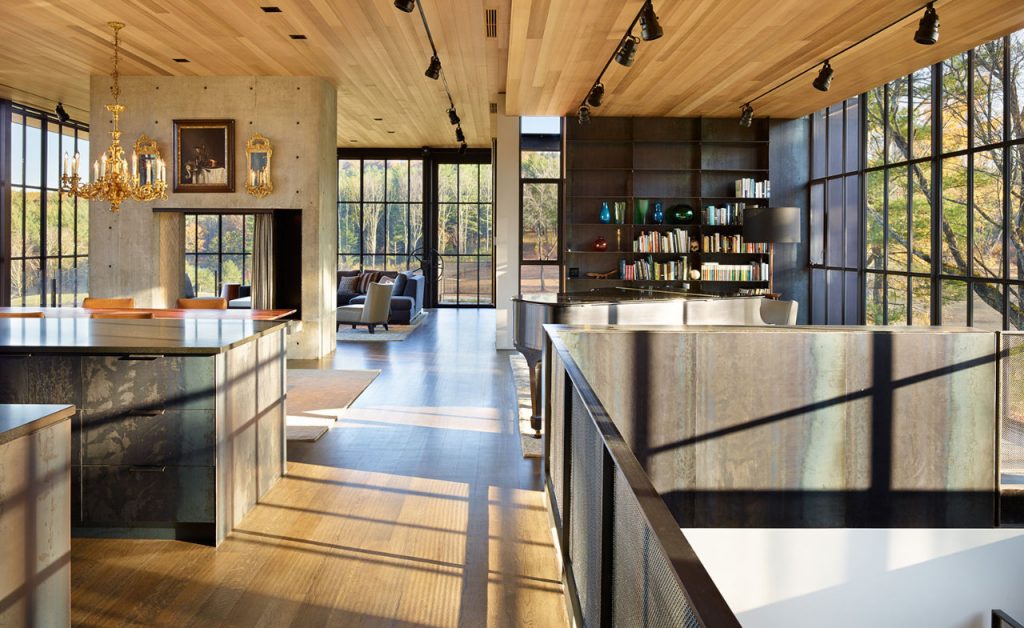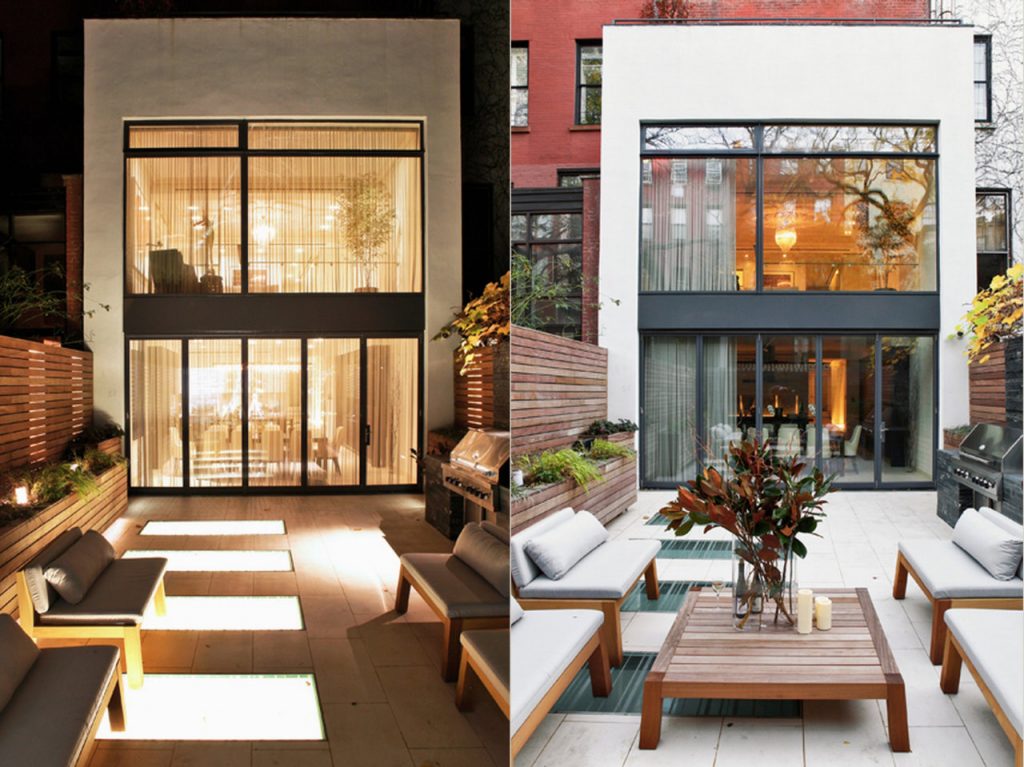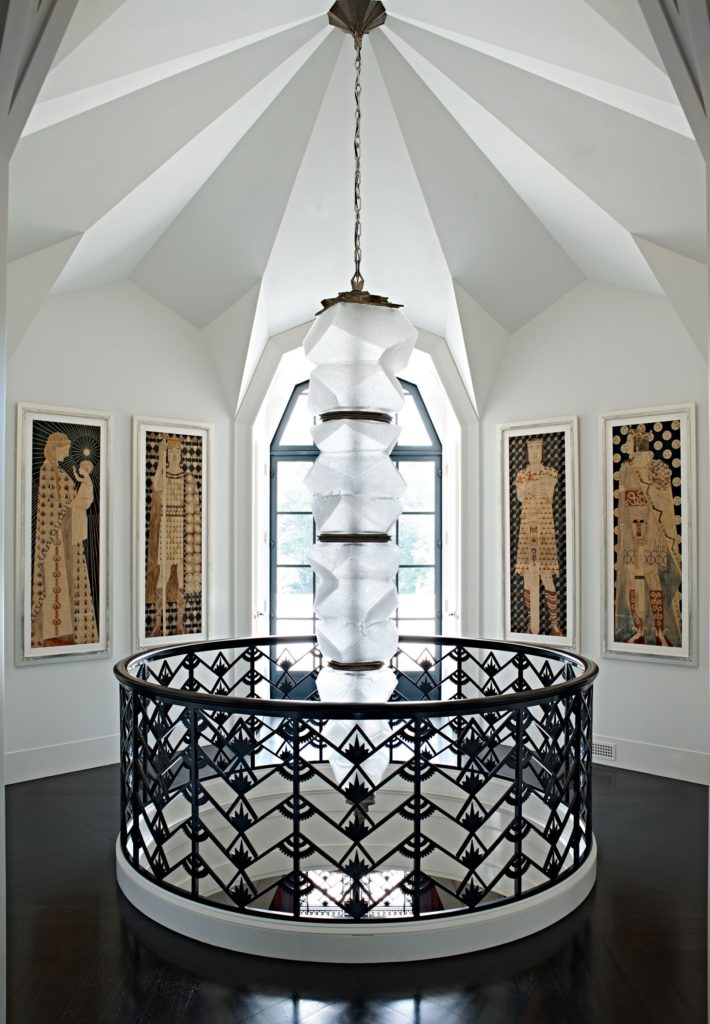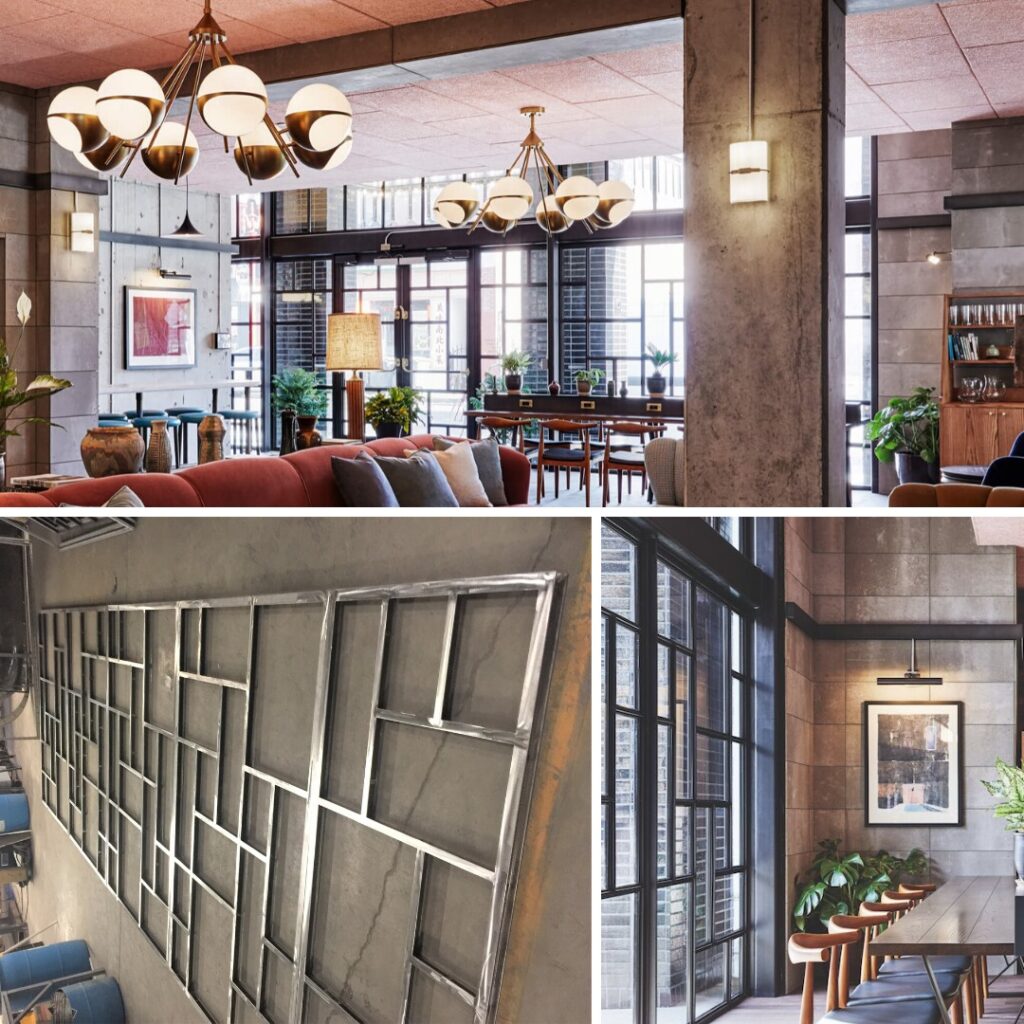The allure of steel as a material for window frames lies not just in its robust and resilient nature, but also in its aesthetic appeal, which effortlessly blends in with contemporary architectural designs. When venturing into the domain of steel window frames, the journey invariably leads to a vital crossroad where a choice must be made between hot rolled and cold rolled steel. Both avenues lead to distinctive destinations that reflect in the character, performance, and aesthetics of the steel windows.
Choosing the right type of steel is akin to selecting the right wine for a meal – the decision significantly influences the overall experience. Similarly, the choice between hot rolled vs cold rolled steel frames affects not only the appearance but also the longevity, performance, and maintenance of steel windows.
Here, we unfold the layers of fabrication and design that differentiate hot rolled from cold rolled steel. This exploration will extend a compass to the enthusiasts, architects, and every inquisitive mind that is keen to delve deeper into the realm of steel windows, aiding them in making an informed choice. Through the lens of our expertise, we will traverse through the manufacturing process, delve into the aesthetic contrasts, evaluate the performance and durability, and peek into the economic implications of these two steel types.
Production Processes
The genesis of hot rolled and cold rolled steel windows lies in the unique manufacturing processes that forge them. Let’s embark on this industrial odyssey to unravel the essence of hot and cold rolling processes.
Explanation of the Hot Rolling Process
The hot rolling process is the forge from which hot rolled steel emerges. This process initiates with heating the steel above its recrystallization temperature, a realm where the steel relinquishes its initial structure to adopt a new one. It’s akin to a phoenix rising from its ashes in a new avatar.
- Heating the Steel: The steel is heated to high temperatures, where it reaches a semi-liquid state. This stage is crucial as it prepares the steel for the subsequent shaping process.
- Passing through Rollers: The heated steel then makes its journey through rollers, which mold it into the desired shape. This stage is where the steel gets its identity.
- Cooling: Post the roller passage, hot rolled steel cools down to room temperature, solidifying its form. The cooling rate plays a pivotal role in determining the final properties of the steel.
Explanation of the Cold Rolling Process
On the flip side, the cold rolling process does not involve heating. It’s like sculpting a piece of marble, where the steel retains its solid state throughout the process.
- Working Steel at Room Temperature: Unlike its hot rolled counterpart, cold rolled steel is worked upon at room temperature, which ensures tighter tolerance and a smoother surface finish.
- Achieving Tighter Tolerances and Smoother Surface Finish: The absence of heating enables cold roll forming to achieve a polished, sleek appearance along with tighter dimensional tolerances.
- Energy Saving: The cold rolling process is more energy-efficient as it skips the heating phase, making it an eco-friendlier option.
The tale of how hot rolled and cold rolled steel come into being is a precursor to understanding their distinctive characters, which we will explore in the subsequent sections. Each process imparts unique properties to the steel, which reflects in the character of the steel windows they morph into.
Aesthetic Differences
Venturing into the aesthetic realm of hot rolled and cold rolled steel windows unveils a narrative told through textures and finishes. Much like two artists with different styles, hot and cold rolling processes craft their signatures on steel.
Hot Rolled Steel Windows

Hot rolled steel windows are the epitome of industrial aesthetics. They bear the raw, organic essence of steel, reflecting a narrative of warmth and robust character.
- Characteristic Textured Appearance: The process lends a textured appearance to hot rolled steel windows, often reminiscent of a rustic, industrial past.
- Organic, Industrial Aesthetics: The innate roughness and the bold lines of hot rolled steel frames echo an organic, industrial charm that adds a vintage yet contemporary touch to spaces.
Cold Rolled Steel Windows

On the contrary, cold rolled steel windows narrate a tale of modernism and precision.
- Smooth, Polished Appearance: The cold rolling process grants a smooth, polished finish to steel, portraying a sleek and modern aesthetic.
- Modern, Sleek Aesthetics: With their refined appearance, cold rolled steel windows seamlessly blend with contemporary architectural designs, embodying modern elegance.
Performance and Durability
The performance metrics of hot rolled and cold rolled steel windows are akin to the varied strengths of seasoned athletes, each excelling in their own domain yet bearing unique strengths.
Strength and Structural Integrity
- Comparative Analysis of Strength: Typically, cold rolled steel is stronger than hot rolled due to the cold working process that enhances its tensile strength.
- Implications on Window Frame Longevity and Durability: The strength variance between hot and cold rolled steel significantly impacts the structural integrity and longevity of window frames.
Thermal Performance
- Discussion on Thermal Expansion and Contraction: Steel’s reaction to temperature variations is crucial, especially in the context of window frames that are exposed to varying weather conditions.
- Impact on Energy Efficiency and Insulation: The thermal performance of steel windows plays a pivotal role in a building’s energy efficiency and insulation, making it a crucial factor in the hot rolled vs cold rolled debate.
Cost Implications
Every choice comes with a price tag, and the realm of hot rolled and cold rolled steel windows is no exception.
Initial Cost
- Cost of Manufacturing: The cost dynamics of hot and cold rolling processes reflect in the manufacturing cost of steel windows.
- Pricing for the End Consumer: Consequently, the pricing structure for end consumers varies based on the type of steel chosen.
Maintenance Cost
- Requirement of Maintenance over Time: Maintenance is an ongoing narrative with steel windows, and the choice between hot and cold rolled steel has long-term implications on maintenance costs.
- Long-term Cost Efficiency: Evaluating the long-term cost efficiency between hot and cold rolled steel windows provides a holistic financial perspective to potential buyers and architects.
The voyage through the domains of aesthetics, performance, and cost unveils the layered nuances that define the character of hot rolled and cold rolled steel windows. Each bearing its unique set of attributes, the choice between the two transcends mere aesthetics, delving into the realms of functionality, durability, and economic implications.
Customization and Design Flexibility
The realm of steel windows is rich with design possibilities, waiting to be molded into forms that resonate with the architectural narrative of a space. The degree of customization and design flexibility offered by hot rolled and cold rolled steel is akin to the palette of a painter, each with its unique set of colors and textures.

Range of Designs and Finishes
- Variety in Hot Rolled Steel: Hot rolled steel offers a robust and industrial aesthetic, with a spectrum of design possibilities springing from its organic texture.
- Sleek Designs in Cold Rolled Steel: The sleek, polished nature of cold rolled steel paves the way for modern, minimalist designs and finishes.
Ease of Customization
- Adaptability of Hot Rolled Steel: Hot rolled steel lends itself to a variety of shapes and sizes, embracing the bold and unconventional.
- Precision of Cold Rolled Steel: The cold roll process allows for a higher degree of precision, facilitating intricate designs and tighter tolerances.

Design Flexibility
Discussing which type allows for greater design flexibility hinges on the architectural narrative one aims to articulate. The rustic charm of hot rolled steel may resonate with some, while others may find the sleek elegance of cold rolled steel more aligned with their vision.
Environmental Impact
In a time where sustainable choices are valued, the environmental footprint of hot rolled and cold rolled steel windows deserves a spotlight.
Energy Consumption during Production
- Energy Dynamics in Hot Rolling: The hot rolling process involves heating the steel, which, although essential for achieving the desired properties, consumes a significant amount of energy.
- Energy Efficiency in Cold Rolling: The absence of a heating phase in the cold rolling process stands as a testimony to its energy efficiency.
Recyclability
Both hot rolled and cold rolled steel are recyclable, echoing the ethos of sustainable living. Their journey doesn’t end with one form; they can be reincarnated into new forms, contributing to a cycle of sustainable usage.
Case Studies
Real-world examples provide a tangible glimpse into the application and performance of hot rolled and cold rolled steel windows.
Projects Utilizing Hot Rolled Steel Windows
Exploring projects that have employed hot rolled steel windows unveils the organic, industrial charm they impart to a space.
Projects Utilizing Cold Rolled Steel Windows
A journey through spaces adorned with cold rolled steel windows showcases the modern, sleek aesthetics they bring to the table.
FAQ
Q: What is the difference between hot rolled and cold rolled steel?
A: Hot rolled steel is a type of steel that is formed when the steel is heated above its recrystallization temperature and then rolled into the desired shape. Cold rolled steel, on the other hand, is produced by further processing hot rolled steel through cold reduction mills at room temperature. This process involves removing the scale and other impurities from the surface of the steel sheet and obtaining a smoother and more refined finish.
Q: What are the mechanical properties of hot rolled and cold rolled steel?
A: Hot rolled steel typically has higher tensile strength and is more malleable compared to cold rolled steel. Cold rolled steel, on the other hand, tends to have a higher yield strength and is often used in applications where precise shapes and dimensions are required.
Q: How does the surface finish differ between hot rolled and cold rolled steel?
A: Hot rolled steel has a rougher surface finish due to the presence of scale and other impurities that are not removed during the rolling process. Cold rolled steel, on the other hand, has a smoother and more polished surface finish due to the removal of these impurities during the cold reduction process.
Q: What is the manufacturing process for hot rolled and cold rolled steel?
A: Hot rolled steel is manufactured by heating the steel above its recrystallization temperature and then passing it through a series of rolling mills to obtain the desired shape. Cold rolled steel is produced by further processing hot rolled steel through cold reduction mills at room temperature, which involves reducing the thickness and improving the surface finish of the steel sheet.
Q: What are the uses of hot rolled and cold rolled steel?
A: Hot rolled steel is commonly used in applications where structural integrity and strength are important, such as in construction, automotive, and heavy machinery industries. Cold rolled steel, on the other hand, is often used in applications where precision and a smooth surface finish are required, such as in the manufacturing of appliances, furniture, and automotive parts.
Q: What are the advantages of using hot rolled steel?
A: Hot rolled steel is generally cheaper and easier to work with compared to cold rolled steel. It has a wider range of shapes and sizes available and is more suitable for applications that require structural strength and durability.
Q: What are the advantages of using cold rolled steel?
A: Cold rolled steel offers a more refined surface finish and greater dimensional accuracy compared to hot rolled steel. It is also more suitable for applications that require precise shapes and dimensions, such as in the manufacturing of appliances and automotive parts.
Q: Can hot rolled and cold rolled steel be made from stainless steel?
A: Yes, both hot rolled and cold rolled steel can be made from stainless steel. Stainless steel is a type of steel that contains a minimum of 10.5% chromium, which provides corrosion resistance and makes it suitable for applications where cleanliness and hygiene are important.
Q: What is the difference between hot rolled stainless steel and cold rolled stainless steel?
A: The main difference between hot rolled stainless steel and cold rolled stainless steel lies in the manufacturing process. Hot rolled stainless steel is produced by heating the stainless steel above its recrystallization temperature and then rolling it into the desired shape, while cold rolled stainless steel is produced by further processing hot rolled stainless steel through cold reduction mills at room temperature.
Q: What are the mechanical properties of hot rolled and cold rolled stainless steel?
A: Hot rolled stainless steel typically has higher tensile strength and is more malleable compared to cold rolled stainless steel. Cold rolled stainless steel, on the other hand, tends to have a higher yield strength and is often used in applications where precise shapes and dimensions are required.
Conclusion
The voyage from the foundry to the facade, exploring the realms of hot rolled and cold rolled steel windows, unveils a narrative rich with contrasts and similarities.
While each holds its unique set of attributes and aesthetic appeal, the choice between the two boils down to the architectural narrative one wishes to articulate.
Through the lens of aesthetics, performance, cost, and environmental impact, we hope to have extended a compass to guide the enthusiasts, architects, and every inquisitive mind through the nuanced landscape of steel windows.



